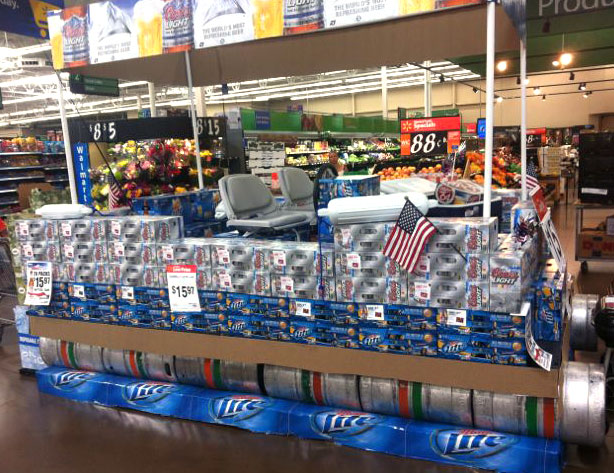Pontoon Boat Bow Riding / Bowriding / Over the Bow Propeller Accidents List
The April 2013 Sarah Roderick pontoon boat propeller fatality on Lake Havasu once again turned our focus to all the people going over the front / bows of pontoon boats and being struck by the propeller. Many victims were bowriding. They sit on the front deck and dangle their feet and legs in the water when the boat is underway. We tried to identify several over the bow pontoon boat propeller accidents to encourage the industry to address this longstanding problem and for use as a collection of accidents (tests) to run current and proposed solutions against.
As we put the list together we began to notice several other paths over the front bow than the traditional bow riding scenario. Alternative accident modes were standing on the deck and loosing their balance as the pontoon boat hit a wave or abruptly slowed. Being inside rails or gate and falling overboard, pontoon boat gate failures, kids behind the fence with their feet reaching forward under it, adults reaching down for many different purposes then losing their balance, etc.
UPDATE – we published a major update to the list on 23 October 2013. It includes about 45 more accidents and is in better chronological order. It is available below.
NOTE- Click on the image below to view the accident list as a pdf. It is best viewed on a very large monitor.
Pontoon Over the Bow Accidents Not Yet Posted
We will store a few accidents here til we get them listed on the big chart.
- Reserved for listing more recent accidents
Request for Help Identifying Additional Over the Bow Pontoon Boat Accidents
If you are aware of other over the bow pontoon boat propeller accidents or have any corrections to our list, please send them to us via the “Contact Us” tab in the top menu.
Accuracy of Pontoon Boat Propeller Accident List
We assembled this list pretty quickly and it may include some errors.
Additionally:
- The boating industry may claim some of these individuals were struck by the boat or drive and not by the propeller.
- Some of the data may have been incorrectly reported to the states or to the Coast Guard.
- Some boat types may have been misclassified.
- Many accidents are not included because they were not reported to the states or not reported by the states to the Coast Guard, or did not meet USCG criteria to be listed.
- Many accidents are not included because they occurred in years we did not closely examine.
- Media reports and the U.S. Coast Guard Boating Accident Report Database (BARD) often fail to explicitly label some pontoon boat propeller strikes that appear to be fall over the bow accidents as such, leaving us to further investigate and sometimes guess if someone fell over the bow or some other direction. We clearly labeled the unconfirmed over the bow accidents as (NOT CONFIRMED OVER THE BOW) in the accident description column.
While this list of pontoon boat over the bow propeller accidents may have some problems, it is by far the most thorough list of these accidents we have ever seen.
Discussion of Bow Riding / Over the Bow Pontoon Boat Propeller Accidents
Over the bow pontoon boat propeller accidents often involve:
- Children and youth
- Rental pontoon boats
- Swimsuits or other clothing becoming entangled in the propeller requiring someone to cut them free while holding their head above water for air
- Alcohol
- Horseplay
- Bow riding / bowriding
- Novice operators in rental pontoon boats that may or may not have been sufficiently instructed in the safe operation of the pontoon boat and in the dangers of propellers
- Fatalities – When people fall over the front / bow of a forward moving pontoon boat, their body is pulled under the boat between the pontoons into the propeller.
- A few days of searching for the body
A Brief History of Pontoon Boats
Ambrose Weeres of Minnesota is credited with inventing the pontoon boat in 1952. He welded two strings of barrels together end to end and put a deck across them. He started selling them, then launched Weeres Industries (brand still in existence, now owned by Premier Marine) to meet the growing demands. Mr Weeres was later known as “Mr. Pontoon”.
Early pontoon boats were often called Patio Boats because they looked like a patio on a boat.
Pontoon boats are much cheaper to build than similar length boats, and have much more useable area. As a result, they have become very popular. Power levels have also picked up in recent years with many pontoons used to pull skiers, and several boats having three pontoons.
Trends in Frequency of Pontoon Boat Bow Riding Accidents
While this post identifies many over the bow pontoon boat propeller accidents, any discussion of trends in the frequency of those accidents must take into account the manner in which these accidents were identified. Since those methods vary considerably by year, it is difficult to compare the total number of accidents from year to year except in spans in which the same methods were used.
Our approach in identifying these accidents is roughly described below:
- We sorted public BARD accident data by year for 2009-2011 to group the pontoon boat propeller accidents. We examined the redacted verbal accident narratives each of those pontoon boat propeller accidents for mention of bowriding or going over the bow. We also quickly looked through the boat manufacturers listed for the other types of boats involved in boat propeller accidents that year to see if they might have really been a pontoon boat misclassified as another type of boat, if so, we checked their accident narrative.
- We similarly checked BARD pontoon boat accident narratives for 1995-1998 to include some earlier data of people falling off the front of pontoon boats.
- We checked our on year by year media filings of propeller accidents to identify additional over the bow pontoon boat propeller accidents. Once we identified those accidents, we tried to find the corresponding accident in BARD when we could. This technique provided many of the 1999-2007 entries on our chart.
- We checked our legal files for pontoon boat over the bow / bow riding cases and attempted to identify those same accidents in BARD.
- We word searched some of our other files looking for pontoon boat over the boat accidents, then attempted to identify those accidents in BARD.
The varying approaches AND about half the states no longer reporting their boat accidents in public BARD beginning in 2010, and BARD data not yet being available for 2012 and 2013 makes year by year comparisons difficult.
The one trend that did draw our attention is the number of pontoon boat over the bow prop accidents in 2010 and in 2011 each exceed the number reported in 2009 (the last year that most of the states reported their data to public BARD). That single observation is quite alarming. We used similar techniques to identify accidents from 2008 thru 2011, but half the states quit reporting data in 2010 and there were still more accidents reported than there were in 2009 AND the same holds true for 2011 BARD data (more over the bow accidents than in 2009).
Another observation was that many pontoon boat bow riding or over the bow propeller accidents occur at slow speeds. Many of the accidents in which speed data is provided were going less than 10 mph or from 10 to 20 mph. Depending on which camp you are in (guards are great or guards don’t work), these slow speeds may reduce some of the opposition to propeller guards based on blunt trauma issues.
Our last observation pertains to deck boats. In recent decades, deck boats have come on the scene. Some versions of deck boats are essentially pontoon boats above the water line (See some of the Godfrey Hurricane Fun Deck boats). We listed accidents involving a few deck boat accidents we could confirm as being pontoon versions, but are sure we missed many others.
Potential Solutions to Over the Bow Pontoon Boat Propeller Accidents
We hope to post an article soon detailing some of the techniques, hardware, and methods currently available, as well as some future possibilities to mitigate over the bow pontoon boat / patio boat propeller accidents.
As always, we welcome your comments.

